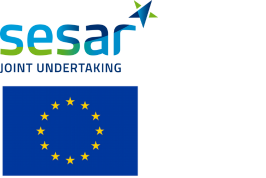- Multimodal Access for Intelligent Airports
- Consortium: Nommon (project coordinator), TML, FTTE, IRT-SYSTEMX, BAC, POLIS
- 2023 – 2025
- maiasesarproject.eu

Context
Air travel is inherently multimodal. Any passenger using air transport services needs to combine them with other modes that facilitate the movement between door-to-door origin and destination points and the origin and destination airports. A multimodal approach to the quality and efficiency of the passenger journey is essential, not only to ensure the competitiveness of aviation by improving the passenger experience and optimising capacity, but also to reduce aviation’s ecological footprint.
Unsurprisingly, the provision of seamless multimodal door-to-door travel options is a priority for the European transport policy. There is a growing emphasis on further integration of air transport with ground modes, as shown by the early implementations of air-rail intermodal solutions and research on multimodal performance indicators (SESAR Joint Undertaking, 2020). While these concepts begin to provide tangible improvements to passenger experience and aviation efficiency, multimodality strategies must consider that airport access is a dynamic context permeable to mobility innovations.
The MAIA project
MAIA is a research project funded by the EU under the Horizon Europe Research and Innovation Programme, through the SESAR JU. MAIA’s vision is that, within 5-10 years, cooperative, connected and automated mobility (CCAM) and urban air mobility (UAM) services will be available in an integrated manner with the airport infrastructure and the other access modes. Artificial intelligence tools and digital twins will be used to anticipate the impacts of different service configurations on the performance of airports as multimodal hubs. Aviation stakeholders will be able to make evidence-based decisions on how to implement, operate and regulate novel services to improve passenger experience, increase capacity, and contribute to reach sustainability goals.
Goals
MAIA aims to develop a set of data analytics and modelling tools to support the evidence-based design and implementation of multimodal airport access solutions, incorporating two passenger mobility innovations: shared autonomous vehicle fleets and electric Vertical Take-Off and Landing (eVTOL). MAIA’s tools will monitor and anticipate changes in passenger behaviour resulting from these new options, optimise vehicle dispatching under multimodal disruptions, and recommend suitable locations for vertiports. The final goal is to maximise the contribution of these mobility innovations to the competitiveness and sustainability of the European aviation sector.
This goal entails the following five specific objectives:
- Identify the opportunities and risks associated with passenger mobility innovations in a multimodal airport access context.
- Develop MAIA-Engine (Solution 1), a toolset for a passenger-centric design and implementation of innovative multimodal airport access services, including new methods and tools for predicting passenger behaviour.
- Develop MAIA-CCAM (Solution 2), a vehicle dispatching tool to support the operation of Shared Autonomous Vehicle (SAV) fleets in the airport access, able to mitigate the impact of multimodal disruption.
- Develop MAIA-UAM (Solution 3), a vertiport site selection framework to support the implementation of Unmanned Aerial Vehicles (UAV) services in the airport access, balancing passenger experience criteria and UAM operational constraints.
- Demonstrate and evaluate the capabilities of MAIA-Engine through their application to a set of case studies in the European airport network, aiming to demonstrate to what extent the novel MAIA-CCAM and MAIA-UAM concepts can help improve passenger experience, capacity, and environmental sustainability.
Nommon’s role
As project coordinator, Nommon has a leading role in the MAIA project, managing and facilitating the collaboration among all partners and stakeholders involved in the project. Additionally, Nommon leads two work packages:
- WP2, focused on identifying the opportunities and risks associated with passenger mobility innovations in a multimodal airport access context through spatial analysis, desk research, and stakeholder involvement, creating a solid conceptual framework for the development of MAIA solutions.
- WP6, related to the demonstration and evaluation of MAIA-Engine’s capabilities through their application to case studies in the European airport network, specifically at Madrid Barajas and Brussels airport, aiming to at demonstrating how to what extent the novel MAIA-CCAM and MAIA-UAM concepts can enhance passenger experience, capacity and environmental sustainability.
In addition, Nommon actively participates in WP3 by implementing two algorithms:
- Machine learning classification models for the characterisation of passengers and journeys attributes relevant to predicting the uptake of CCAM and UAM-based airport access services. Nommon will implement these models that will be trained to capture the relationships between the target variables missing in the mobile network data and the explanatory variables that are present both in surveys and mobile network data.
- Data-driven shared mobility demand forecast models. Nommon will develop algorithms for airport access service demand modelling. In MAIA, this machine learning models will predict the volume of shared mobility trips at origin-destination pair level considering features that may be particularly explanatory of the demand captured by shared airport access services (e.g., distribution of passengers according to features such as group travelling or baggage carrying, available thanks to the passenger profiling developments) so that it can support the operations of airport access shared services (e.g., hourly trip requests).

MAIA is funded by the EU under the Horizon Europe Research and Innovation Programme, through the SESAR Joint Undertaking (grant agreement No. 101114853).